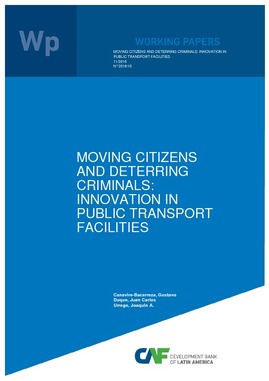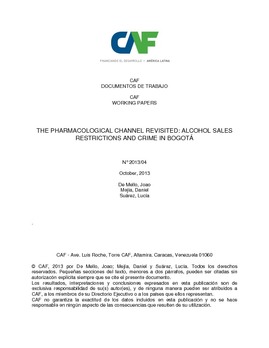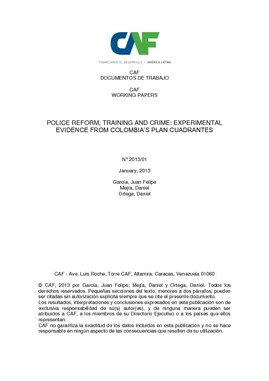Moving Citizens and Deterring Criminals: Innovation in Public Transport Facilities
Resumen
This paper explores the relationship between urban public transportation innovation and crime. In 2004, the city of Medellin in Colombia developed an innovative public transportation system based on cable cars (Metrocable) to reach dense, isolated and dangerous neighborhoods. Using Spatial Difference in Difference approaches and a rich dataset at spatial analytical level, using max-p modeling, we explore the effects of the Metrocable on crime and its mechanisms. We find a significant impact on homicides reduction in the treated neighborhoods, especially in the medium run. Homicides decreased around 41% more than the general crime reduction in the city between 2004 and 2006, and by 49% between 2004 and 2012. We explore two mechanisms through which this intervention may affect the level of criminality, one is reducing the travel costs and improving accessibility to the rest of the city for low-income population (socioeconomic mechanism); the other is the increasing of the probability of apprehension for potential and active o enders (deterrent mechanism).
Materia
País / Región
Fecha
2016-11Citar de esta publicación
Item perteneciente a la Colección

Autor
Canavire-Bacarreza, GustavoDuque, Juan Carlos
Urrego, Joaquin A.
Items Relacionados
The pharmacological channel revisited: alcohol sales restrictions and crime in Bogotá
Our goal in this paper is twofold: First, evaluate the impact on crime of the restriction of latenight alcohol sales in Bogotá; and second, quantify the ...
Police reform, training and crime: experimental evidence from colombia's plan cuadrantes
The Plan Nacional de Vigilancia Comunitaria por Cuadrantes (PNVCC) is a new police patrolling program introduced in the eight major cities of Colombia ...
N°2- Visions for Development. Financing for Development: A Key Summit to Overcome the Current Crossroads
In this edition, Development Perspectives focuses on the Fourth Conference on Financing for Development, held in Seville at a pivotal moment for humanity. ...




